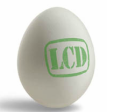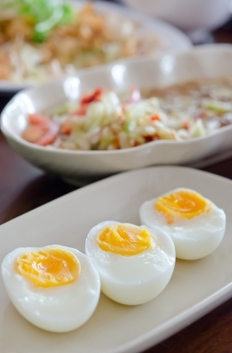People with diabetes need balanced snacks, right?
I recently joined Pinterest and came across this link as I was looking for images to pin to my “Healthy Low Carb Board”: 10 Low-Carb Snack Ideas for People with Diabetes. Looking at the list of foods had me scratching my head. These snacks are low carb? Then I read this:
“‘If you need a pick-me-up between meals, a snack with 15-20 grams of carbohydrate is often the answer. For someone with diabetes, it’s important to eat a fiber-filled and nutrient-rich snack to curb the appetite before the next meal,’ says Angela Ginn-Meadow, a registered dietitian and a spokesperson for the American Dietetic Association . “
So the person who wrote this article is not an RD but obtained information on snacks for PWDs from a dietitian and spokesperson for the AND (Academy of Nutrition and Dietetics).
As a diabetes educator, the suggestions in this article bother me on a number of levels. First of all, why are we still promoting snacks to people with diabetes? In the days of insulin peaking in the middle of the night and causing overnight lows this was understandable, but most people are on modern insulins that do not cause this problem. I know that many dietitians and nutritionists recommend eating every 3-4 hours, but I strongly disagree with that strategy. First of all, I find that people generally end up eating more if they are snacking or grazing. If someone eats 2-3 meals a day containing adequate protein and fat, there is no need to snack in between. Snacks with 15-20 grams of carbohydrate can hardly be called “low carb.” I consider an item with less than 5 grams of carb, preferably less, to be low carb.
There are a number of reasons to avoid carb-containing snacks in people with all types of diabetes. For T2s with insulin resistance, eating carbs between meals causes a rise in blood sugar, resulting in the pancreas needing to produce more insulin, perpetuating hyperinsulinemia and promoting weight gain. Blood sugar is expected to rise after eating; the extent to which it does depends largely on the amount of carbohydrate consumed. Fasting/premeal blood sugar targets differ slightly between the American Diabetes Association (80-130) and American Association of Endocrinologists (80-110), but the idea is for blood sugar to return to a healthier lower level by the time the next meal comes around. By eating snacks containing more than a minimal amount of carbs, the likelihood of meeting this goal is significantly reduced, and the person ends up well over the target range for most of the day. Snacking on carbs between meals is an equally terrible suggestion for people with T1 diabetes and people with T2 on mealtime insulin. Bolusing insulin to cover snack carbs places a T1 at risk for hypoglycemia due to stacking doses from the previous and subsequent meal, and foregoing the insulin is certain to spike blood sugar to extremely high levels.
In my opinion, the only time someone with diabetes should eat carbs in between meals is to treat hypoglycemia, universally defined as blood glucose less than 70. In that case, the treatment is 10-15 grams of rapid-acting carbs, preferably glucose tablets or gel (alternatively 4 oz juice, soda, etc). The snacks in the list above contain some fiber, which would delay recovery and therefore would not be a good choice.
Although I think carbohydrate restriction is the ideal way to manage diabetes, I know not every person wants to adopt it, and I respect a person’s right to make that decision. However, I think promoting “balanced” snacks containing carbs to PWDs is terribly misguided. If truly hungry between meals, a hard-boiled egg, piece of cheese, or a few nuts makes much more sense in terms of maintaining stable blood sugar levels, satiety, and decreasing potential for weight gain.


Thank you so much for continuing to speak wisdom to us about how to control our blood sugar.
Thanks, Marsha! Glad you find the information helpful.
The more I think about it, the more it looks for me that the advise to snack is one of main reasons for the modern rise in the obesity epidemic. First of all, the more often a person eats ,the more important the macro-composition of nutrients becomes. For example, the famous Kitovan tribe eats diet high in carbs, but only once a day. Many LCarbers report weight gain when they snack often, and the IF regiment moves many people from a weight-loss plateau.
Thanks for your comments, Galina. I agree that snacking has played a large role in the obesity epidemic and that eating carbs several times a day can be a recipe for metabolic disaster. I don’t think I’d recommend eating all the day’s carbs in one sitting for someone with diabetes unless the amount was very low, though. But for people struggling with weight issues, practicing IF and eating more carbs limited to one sitting may work very well.
I am talking about people without diabetes. I have a friend who managed to reverse her middle-body spread after 40+ years old by limiting eating to 2 times a day within 6 hours without changing anything else about her diet. I tryed to follow her example, but failed until I found out LCarbing
I think for many people who are more challenged health-wise than my friend is IF could be as important as carbohydrates limitation.
@Franziska, great article, thanks. Your RD creds & experience give this post a “stick-it-to-the-man” feeling. It’s really not a good idea to promote “healthy carb snacks” for someone with metabolic carb intolerance. Also, interesting insights about insulin-dependent diabetes & hypo IRL. It makes sense.
@Galina, I like the “IF” approach too, even if it’s just fasting between breakfast, lunch, and dinner.
Thanks so much for your comments, Bill! Love the “stick it to the man” comment — happy to oblige 🙂
Hi Galina,
I’m unable to reply to your comment but wanted to thank you for the clarification.
‘Right on’ again, Franziska. I also like the way you take a position (with which I agree completely) with such certitude, albeit with a polite ‘in-my-opinion.’ You are engaging ‘the man,’ as a previous commenter stated, and you are ‘credentialed,’ so that adds gravitas as well. Keep up the good work!
Thanks so much for your comments and continued support, Dan!
Readers, please check out Dan’s blog, The Nutrition Debate, at http://www.thenutritiondebate.com, and Bill Lagakos’s blog, Calories Proper, at http://www.thenutritiondebate.com. I have links to both sites in my “Links” section as well.
This article absolutely makes sense to me. My grandparents had Type 2 diabetes, and they took seriously the snacktime. They always sat down, and had a pre-lunch, pre-dinner actually. What happened? They became really really overweight.
Thanks so much for your comments and sharing your grandparents’ experience! Constant snacking can indeed lead to significant weight gain.
One of the reasons for the snacking idea with insulin-using diabetics derives from the nature of one of the “old” insulin formulations, NPH. NPH was used to cover meals (bolus) and as a background insulin (basal).
Since it peaked at about 6 hours, it meant that a person using it better be eating at that time or hypoglycemia would ensue. This fact, combined with hypo-phobic doctors, gave rise to incessant encouragement of liberal snack habits.
Your post reminds me that our bodies actually need a period of fasting between meals.
Hi Terry,
Thanks so much for your comments. Yes, NPH is the type of insulin I was referring to when I talked about insulin peaking and causing nocturnal hypoglycemia, but you’re correct that it could happen 6 hours after a morning dose as well. Just can’t wrap my head around why many dietitians recommend snacks for all people with diabetes, even those not on insulin.